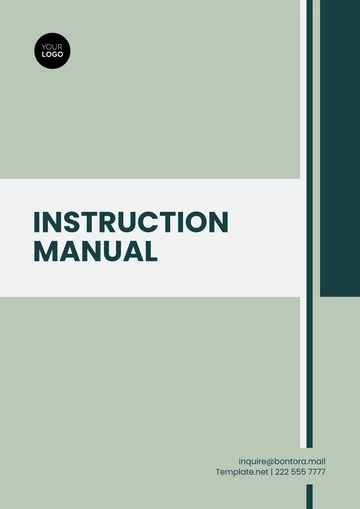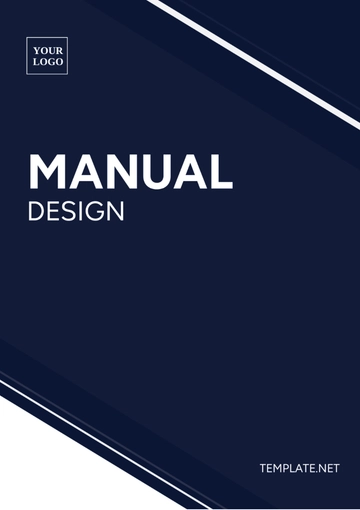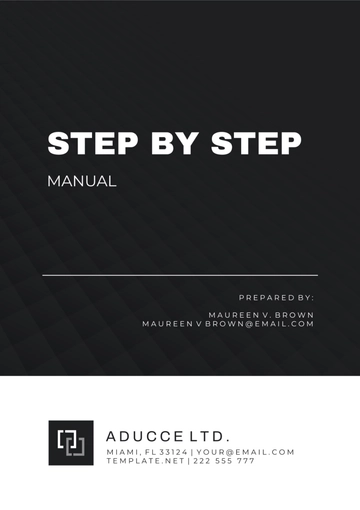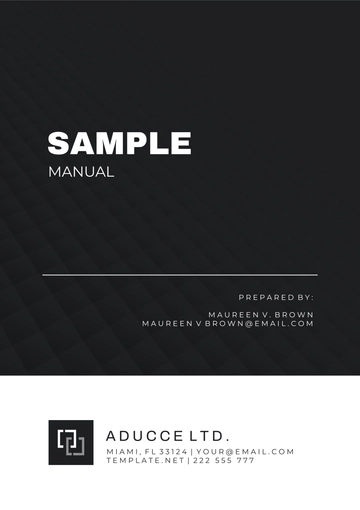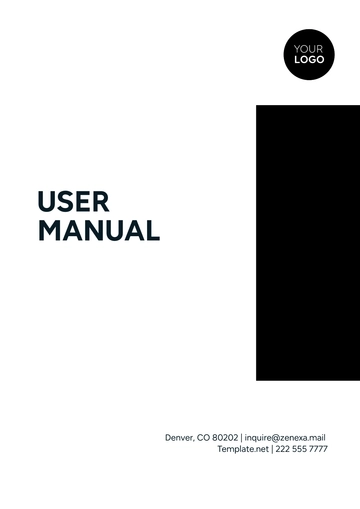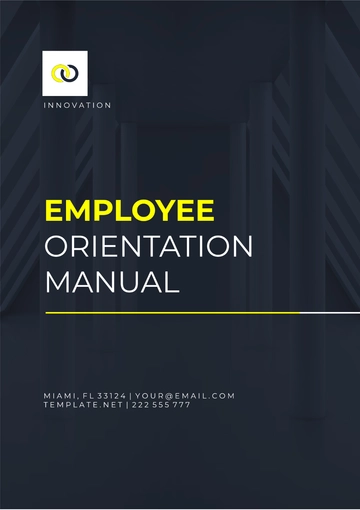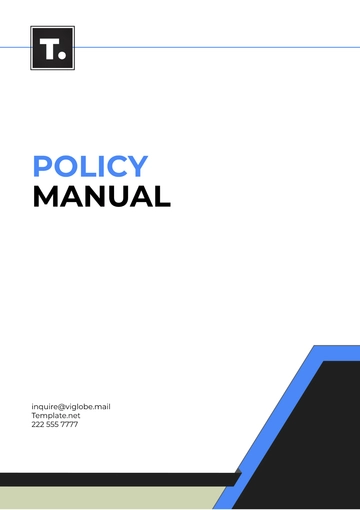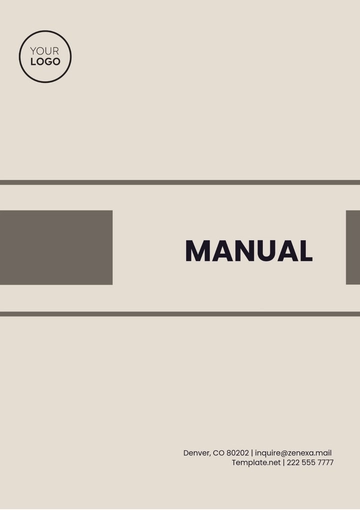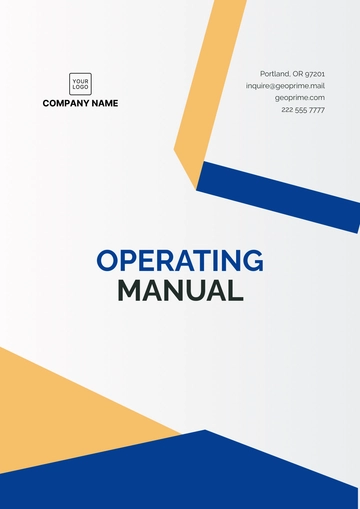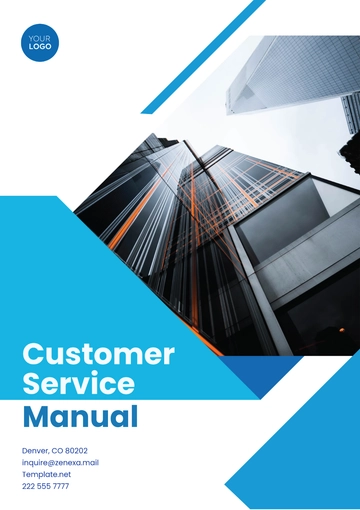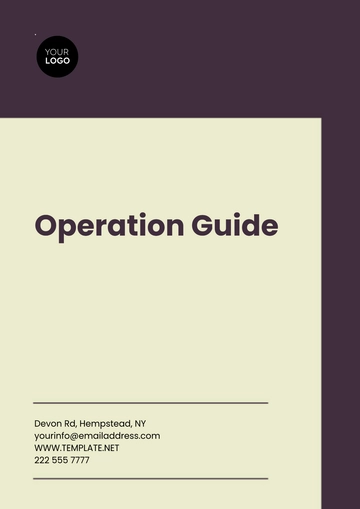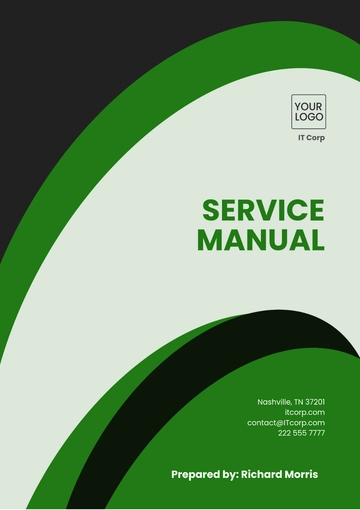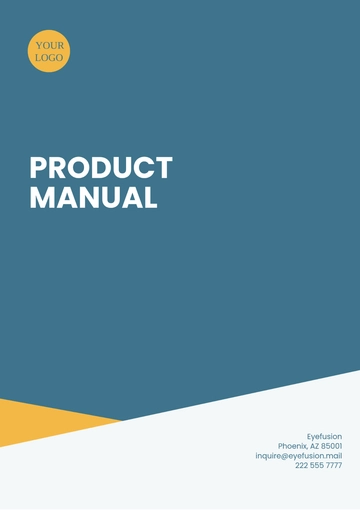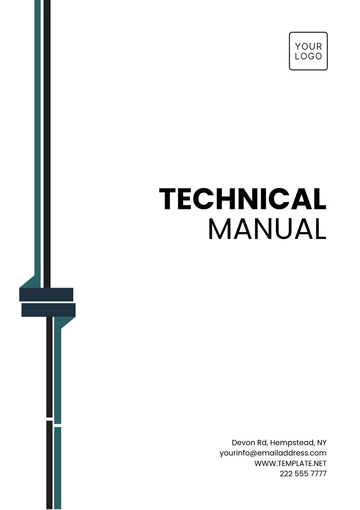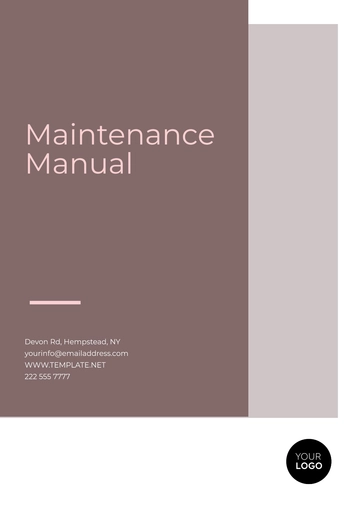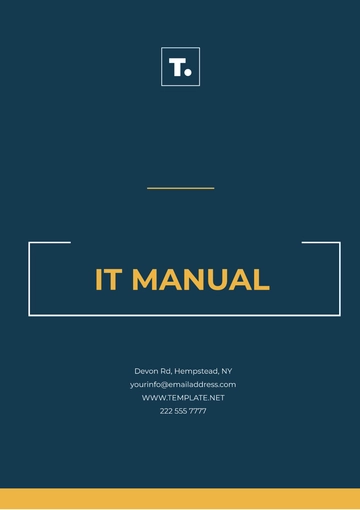Free Marketing Interactive Content Manual
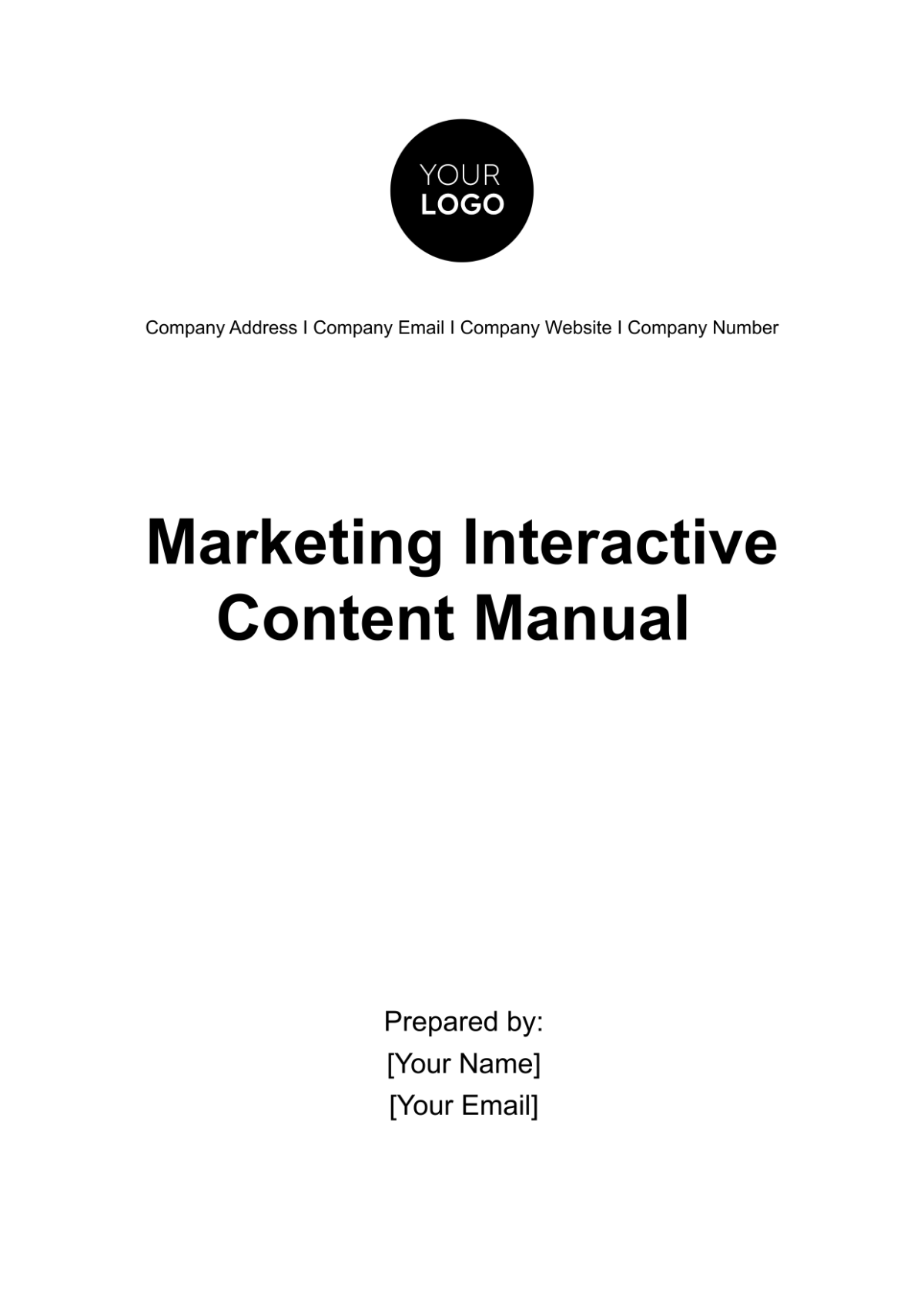
1. Introduction
This comprehensive guide serves as a roadmap to harness the power of interactive content in achieving our marketing goals. In today's fast-paced digital landscape, traditional forms of content are often overlooked. Interactive content, however, engages the audience more dynamically by encouraging active participation.
This manual is organized into various sections, each dealing with crucial elements of our interactive content strategy. You'll find insights into setting objectives, identifying the target audience, and choosing the right channels for distribution. We also delve into different types of interactive content, such as quizzes, interactive infographics, polls, calculators, and webinars, and provide guidance on how to create and deploy them effectively. Moreover, this manual includes an implementation guide to help you through the processes of content creation, promotion, and analytics monitoring.
By adhering to the guidelines and procedures outlined in this manual, you will be better equipped to produce content that is not only engaging and informative but also compliant with legal standards. Our aim is to help you create compelling experiences that resonate with our audience, drive conversions, and contribute to [Company Name]'s overall marketing objectives.
2. Interactive Content Strategy
By having a well-defined strategy, we can ensure that our interactive content efforts align closely with our overall marketing objectives and effectively resonate with our target audience. This chapter is divided into three main sections: Objectives, Target Audience, and Channels. Each section aims to outline specific elements that are vital to the success of our interactive content strategy.
2.1 Objectives
The objectives section outlines what we aim to achieve through our interactive content initiatives. Having clear objectives provides a direction and measurable goals for our content efforts.
Objectives | Description |
Engage customers | Increase time spent on the website by users |
Collect data | Gather valuable customer data for analytics |
Increase conversion rates | Convert more visitors into customers |
Boost social media engagement | Increase likes, shares, and comments on our social media posts |
2.2 Target Audience
Knowing who our target audience is crucial for tailoring our content to meet their needs and interests effectively.
Audience Criteria | Details |
Age | 18-45 |
Gender | All genders |
Location | Nationwide |
Interests | Technology, Lifestyle, Business |
2.3 Channels
Choosing the right channels for distribution maximizes the reach and impact of our interactive content.
Channels | Application |
Website | Main platform for hosting interactive content |
Social Media | For sharing and engagement |
Email Marketing | Targeted outreach and follow-ups |
By adhering to this Interactive Content Strategy, we can maintain a cohesive, effective, and efficient approach to engaging our audience.
3. Types of Interactive Content
We explore the various Types of Interactive Content that [Company Name] utilizes to engage audiences, collect data, and drive conversions. Interactive content is a broad category, encompassing several formats and types, each with its own unique advantages and best-use scenarios. Knowing the specifics of each type allows us to match the most appropriate form of interactive content with our objectives, target audience, and chosen distribution channels. Whether it's quizzes designed to entertain and inform, interactive infographics that make complex data easily digestible, or webinars that position us as thought leaders in our industry, choosing the right type is key to the success of our interactive content strategy.
In the following sections, we will delve into each type's purpose, examples, and frequency, as well as the steps involved in their creation and deployment. This in-depth exploration aims to provide a comprehensive understanding of the myriad options available, equipping you with the knowledge to choose the most effective interactive content types for your specific needs and goals.
3.1 Quizzes
Purpose: To entertain and collect data.
Example: "Which [Product] is Best for You?"
Frequency: Bi-weekly
Creation Steps | Responsible Person | Due Date | Channels |
Content Idea | [Name] | [Date] | Website |
Design | [Name] | [Date] | Social Media |
Deployment | [Name] | [Date] |
3.2 Interactive Infographics
Purpose: To educate and engage.
Example: "How Our [Service] Works"
Frequency: Monthly
Creation Steps | Responsible Person | Due Date | Channels |
Content Idea | [Name] | [Date] | Website |
Design | [Name] | [Date] | Social Media |
Deployment | [Name] | [Date] |
3.3 Polls and Surveys
Purpose: To collect opinions and feedback.
Example: "What Feature Would You Like to See Next?"
Frequency: Weekly
Creation Steps | Responsible Person | Due Date | Channels |
Content Idea | [Name] | [Date] | Website |
Design | [Name] | [Date] | Social Media |
Deployment | [Name] | [Date] |
3.4 Calculators
Purpose: To provide value and gather data.
Example: "[Product] Cost Calculator"
Frequency: Quarterly
Creation Steps | Responsible Person | Due Date | Channels |
Content Idea | [Name] | [Date] | Website |
Design | [Name] | [Date] | Social Media |
Deployment | [Name] | [Date] |
3.5 Webinars
Purpose: To educate and establish authority.
Example: "Understanding [Topic/Service]"
Frequency: Bi-monthly
Creation Steps | Responsible Person | Due Date | Channels |
Content Idea | [Name] | [Date] | Website |
Design | [Name] | [Date] | Social Media |
Deployment | [Name] | [Date] |
4. Content Calendar
The Content Calendar serves as a crucial organizational tool that provides a bird's-eye view of our entire interactive content strategy for the month. It offers a structured timeline that outlines not only when each piece of content will be created but also when it will be published and promoted across various channels. This calendar is a living document, adaptable to emerging trends, customer feedback, and performance metrics, but it primarily serves to keep our content efforts synchronized and aligned with our objectives.
Below is a sample content calendar for the month of October. This calendar serves as a template for planning, executing, and tracking our interactive content activities. It outlines the types of content to be created, the responsible parties, and the timelines for creation, publishing, and promotion.
Week | Date | Content Type | Topic | Responsible Person |
Week 1 | Oct 1-7 | Quiz | "Which [Product] is Best for You?" | [Name] |
Week 1 | Oct 1-7 | Poll | "What Feature Do You Want Next?" | [Name] |
Week 2 | Oct 8-14 | Webinar | "Understanding [Topic/Service]" | [Name] |
Week 2 | Oct 8-14 | Interactive Infographic | "How Our [Service] Works" | [Name] |
Week 3 | Oct 15-21 | Calculator | "[Product] Cost Calculator" | [Name] |
Week 3 | Oct 15-21 | Survey | "Customer Satisfaction Survey" | [Name] |
Week 4 | Oct 22-28 | Quiz | "How Well Do You Know [Topic]?" | [Name] |
Week 4 | Oct 22-28 | Webinar | "Future of [Industry/Topic]" | [Name] |
Creation Deadline | Publish Date | Channels for Promotion | Promotion Deadline |
Oct 2 | Oct 4 | Website, Social Media | Oct 5 |
Oct 3 | Oct 5 | Website, Email | Oct 6 |
Oct 9 | Oct 11 | Website, Email | Oct 10 |
Oct 10 | Oct 12 | Website, Social Media | Oct 13 |
Oct 16 | Oct 18 | Website, Social Media | Oct 19 |
Oct 17 | Oct 19 | Website, Email | Oct 20 |
Oct 23 | Oct 25 | Website, Social Media | Oct 26 |
Oct 24 | Oct 26 | Website, Email | Oct 27 |
This sample content calendar is designed to be flexible and can be adjusted according to emerging needs, trends, or performance metrics. However, it serves as a basic roadmap for planning and executing our interactive content strategy efficiently.
5. Implementation
The Implementation chapter focuses on taking the theory of our interactive content strategy and turning it into actionable plans. This is where the rubber meets the road. Without effective implementation, even the most robust content strategy can falter. We'll walk through the specific steps involved in content creation, promotion, and analytics tracking. This chapter serves as a practical guide to help team members, especially those responsible for execution, to understand the tools, best practices, and KPIs essential for successfully implementing our interactive content strategy.
Section | Key Elements | Details |
Creating Content | Tools & Format Standards | Tools to use: [List of Tools]<br>Format standards: Follow the branding guidelines provided in the appendix. |
Promotion | Channels & ROI | Leverage social media, email lists, and partnerships.<br>Use paid promotions wisely, tracking ROI. |
Analytics | KPIs & Tools | KPIs: Time spent, Conversion rate, Engagement rate.<br>Tools: Google Analytics, [Other Tools]. |
Each section is aimed at providing clear and actionable insights, allowing for a seamless and effective implementation process. By following this implementation guide, we aim to ensure that all content activities are coherent, measurable, and aligned with our overall objectives.
6. Content Standards
Language: English, formal but approachable.
The language we use in our interactive content should be English, aimed at offering universal appeal and understanding. While the tone should remain formal to maintain professionalism, it should also be approachable to encourage engagement. This balance ensures that our content is both authoritative and relatable, helping us build trust while facilitating better user interaction. Think of it as having a knowledgeable yet friendly conversation with our audience.
Accessibility: Follow ADA guidelines.
Accessibility is not just a legal requirement; it's a moral imperative to ensure that our content is accessible to everyone, including those with disabilities. Following the Americans with Disabilities Act (ADA) guidelines is essential for making our interactive content universally accessible. This involves providing text alternatives for non-text content, ensuring keyboard functionality, and offering easy navigation, among other things. By adhering to ADA guidelines, we not only mitigate legal risks but also expand our reach to a wider, more inclusive audience.
Cite sources where applicable.
Credibility is key in establishing trust with our audience. As such, it's imperative to cite sources whenever we include data, quotations, or other information derived from external sources. Proper citation gives credit where it's due, adds a layer of reliability to our content, and provides avenues for the audience to delve deeper into the subject matter if they wish. It reflects well on our brand's integrity and can establish us as a trusted resource in our field.
7. Legal Compliance
Navigating the legal landscape is an essential aspect of any interactive content strategy. In this chapter, we will focus on the crucial areas of legal compliance that directly affect our content creation, promotion, and data collection methods. The aim is to provide a foundational understanding of key legal frameworks like GDPR, copyright laws, and privacy policies. Ignorance is not a defense in the eyes of the law, and non-compliance can result in penalties, loss of consumer trust, and damage to brand reputation. Therefore, it's imperative to be proactive in ensuring that all our interactive content adheres to legal norms and guidelines.
GDPR (General Data Protection Regulation). GDPR is a regulation that impacts companies operating within the European Union or dealing with EU citizens. It places stringent requirements on how personal data is collected, stored, and used. Compliance with GDPR is non-negotiable; non-adherence can result in hefty fines and legal actions. In terms of interactive content, this means ensuring that any data collection methods, such as quizzes or surveys, must be transparent and secure. Users should be informed about how their data will be used and stored, and explicit consent must be obtained.
Copyright Laws. Copyright laws protect the original work of the creator and prohibit others from using that work without permission. In the context of interactive content, this means that any images, videos, or text that are not original creations of [Company Name] must either be licensed or fall under the category of fair use. Failure to comply with copyright laws can result in legal repercussions, including fines and potential lawsuits. Always ensure that you have the right to use any third-party content and that proper attribution is given when required.
Privacy Policy. Legally, we are required to have a privacy policy if we collect any form of personal information from our users. For interactive content, especially pieces that require user participation and data collection like quizzes or surveys, it’s crucial to have a clearly articulated and easily accessible privacy policy. This should detail what data is being collected, for what purpose, and how it will be stored and used. It’s not only a legal requirement but also a cornerstone in building trust with your audience.
8. Appendix (Attachments)
8.1 Sample Templates
Quiz Template
Poll Template
Webinar Slide Deck
8.2 Resources
Branding Guidelines
Contact List
9. Contact Information
Head of Interactive Content:
[Name], [Email], [Phone]Content Creators:
[List of Names and Contact Details]
Legal Compliance Officer:
[Name], [Email], [Phone]
_____________________________________________________________________________________
For any further queries, please refer to the contact information provided above. Thank you for adhering to [Company Name]'s Marketing Interactive Content Manual.
- 100% Customizable, free editor
- Access 1 Million+ Templates, photo’s & graphics
- Download or share as a template
- Click and replace photos, graphics, text, backgrounds
- Resize, crop, AI write & more
- Access advanced editor
Introducing the Marketing Interactive Content Manual Template from Template.net! This editable and customizable resource equips you with essential strategies for creating engaging content. Easily tailor it to your brand's needs using our AI Editor Tool. Elevate your marketing efforts with this comprehensive manual. Get started today and captivate your audience!
